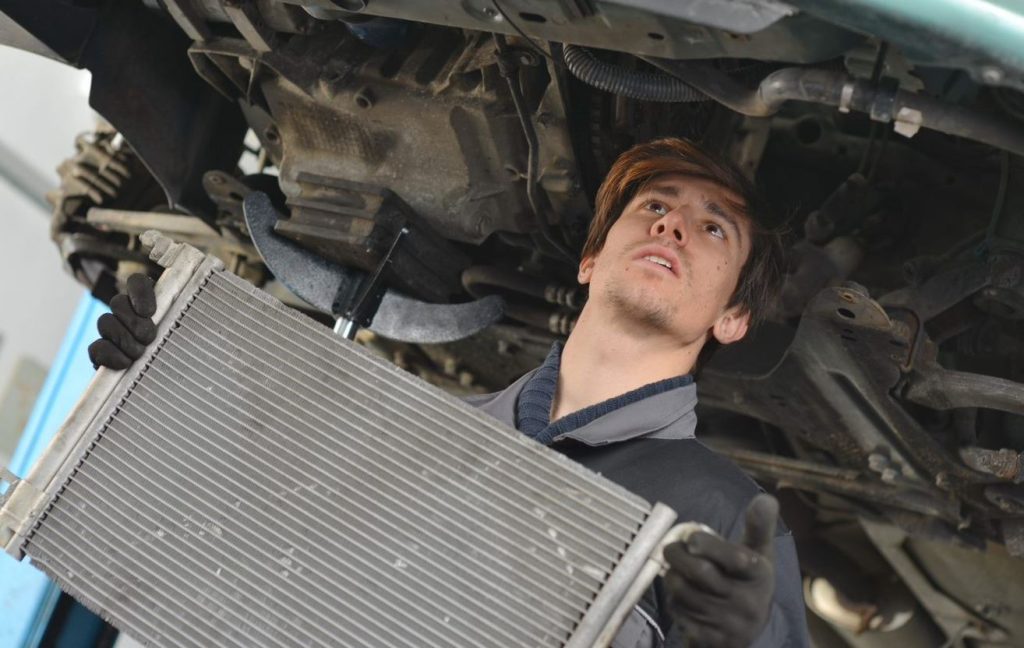
No driver wants to experience the dreaded knocking sounds, steaming hood, or power loss from an overheating engine. But if your radiator ever stops functioning, there’s nothing to keep your engine safely cool while out on the road. So let’s take a look at five warning signs that your radiator is in trouble. If you notice any of these issues, visit Coughlin Ford of Heath at once for radiator repair.
Coolant Light Stays On
Modern Ford vehicles have sophisticated sensors that will quickly let you know if anything goes wrong. The coolant level light on your dashboard tells you when the coolant is below the level of the sensor, which is insufficiently low.
This light comes on when you start your car because it takes a few minutes for the coolant to start flowing, whereupon it reaches the sensor. But if this light doesn’t turn off after five minutes of driving, then you might have a coolant problem, such as a leak in your radiator.
Temperature Gauge Shoots Up
Something else to keep an eye on is the engine temperature gauge. When operating properly, your Ford’s engine will be within the safe range of 195 to 220 degrees.
When radiators malfunction and stop cooling the coolant, the engine will rapidly heat up. If you ever see the temperature dial jump higher than 220 degrees, pull over right away. Driving with even slight overheating can cause damage to your engine.
Coolant Puddling Under Your Car
When coolant leaks, it usually stems from a radiator hose, a connection between a hose and the radiator, or the body of the radiator itself. You’re likely to notice leaking coolant dripping and pooling under your car.
Coolant is usually a bright red, blue, green, or yellow color, and it smells sweet. If you suspect leaking coolant, check the coolant reservoir to see if the level is low. The container will have clear “min” and “max” level marks to help you do this.
Your Ford Dealer Can Pressure Test Your Radiator
When inspecting your cooling system, a technician at your local dealership can identify potential leaks. One process they use is a pressure-testing system to check that your radiator’s hoses, fan, cap, and thermostat are all in good working order.
Internal or External Radiator Rust
In cold or humid environments, rust can be a devastating factor for radiators and other engine parts. If left untreated, rust will eventually wear a hole in the radiator, causing it to leak. Usually, the regular engine’s heat evaporates away the moisture that leads to rust. So the risk of rust is greatly enhanced if you leave your car for long periods of time without driving it.
Inspect your radiator every now and then, and if you spot a little rust, you can usually clean it away with WD-40 or another effective rust remover. Internal rust is harder to spot. When you check your coolant reservoir, any brown discoloration to the coolant means your radiator has internal rust. This will only happen if you use poor-quality coolant lacking in anti-rust properties or if you allow your coolant to grow too old without refreshing it.
Have your radiator examined, repaired, or replaced today at Coughlin Ford of Heath. We’re a well-established dealership offering top-notch deals and service to all the region’s Ford drivers.




